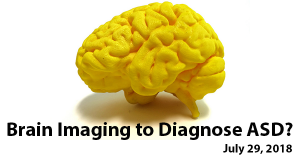Check out other stories from the Latest News
Brain Study Reveals Commonality between ASD and ADHD
By Chelsea Toledo, M.A. on July 29, 2018

Background: Autism Spectrum Disorder (ASD) is a neurodevelopmental condition characterized by differences in communication, behavior, and social development. Prior brain-imaging studies have shown pattered differences in the connectivity of brains of people with ASD compared to their typically developing peers. However, little research has compared the brains of ASD with those of people with other neurodevelopmental disorders.
What’s New: A new study compared the connectivity of brains of people with ASD to those of people with attention deficit/hyperactivity disorder (ADHD), seeking commonalities. The researchers leveraged existing brain-imaging data from a total of 1305 people between the ages of 7 and 21 – 284 with ASD, 369 with ADHD, and 652 age-matched controls with typical development.
The researchers found:
- Three main factors were common to the brains of people with ASD and ADHD, but not people with typical development.
- The three factors were differences in the connectivity of the default mode network (a set of brain regions active when a person is daydreaming), the dorsal attention network (a set of brain regions active when a person is looking into space), and the salience network (a set of brain regions active in identifying important stimuli).
- These patterns likely comprise a “neural signature” for people with ASD and those with ADHD, reinforcing existing diagnoses made for either disorder.
Why it’s important: This study reveals underlying patterns in brain connectivity in both people with ASD and those with ADHD. Further research could help define this “neural signature” for clinical application.
Image Credit: Nevit Dilmen, NIH 3D Print Exchange, National Institutes of Health. Shared via Flickr under a Creative Commons license.
Help me understand :
| Source(s) : |
| Tweet |

